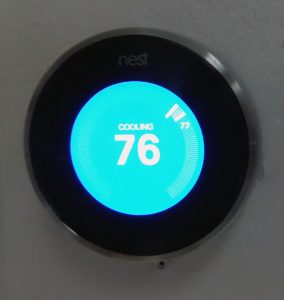
Thermostats are the central switch that controls operation of heating and cooling systems—commonly the largest energy end use in homes. That energy setup/setback has potential for energy savings has been demonstrated repeatedly in well-controlled evaluations. Thus understanding how the occupants and thermostat interact is key to controlling energy use. Programmable thermostats have often been bypassed by occupants. Newer “smart” thermostats get around these problems by self-programming depending on heuristic or machine learning evaluation of user control habits as well as sensed occupancy. These modern devices use a combination of data on occupancy, weather, and thermostat-setting preference to help consumers with automated setback/setup schedules.
Researchers at FSEC installed smart thermostats, primarily the Nest Learning Thermostat, in more than 30 research homes. A full year of sub-metered hourly temperature and heating and cooling system operation data were available prior to the installation of the smart thermostat allowing detailed evaluation of temperature-related changes. Overall measured heating and cooling energy savings averaged 9.5% with some significant variation among homeowners.
*This paper was presented at the 2016 ACEEE Summer Study on Energy Efficiency in Buildings in Pacific Grove, CA on August 22 -26, 2016.